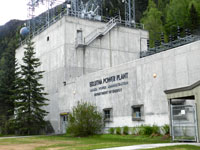Load Research Programs
Load research programs are developed individually for each electric utility customer to help utility staff understand how each customer or rate class uses energy. Ultimately, load research data is used to determine how each customer class’ usage patterns affect service costs. We assist our clients in estimating load factors and coincident factors for customer classes in both cases where hourly data is available through advanced metering or when hourly demand data needs to be obtained. Load research identifies how much energy is used versus the maximum demand for individual customers, how coincident individual customer demand is within a group of customers, and the coincidence of each customer class’ demand with the utility system maximum demand.
Anchorage Municipal Light & Power

EES Consulting assisted Anchorage Municipal Light & Power (ML&P) in determining the sample size required that would result in statistically significant load research results. The load research information was used to estimate individual class load factors, group coincident factors, and system coincident factors. These data was used in the cost of service studies completed for ML&P.
City of Boulder City
EES Consulting assisted the City of Boulder City in determining the sample size required that would result in statistically significant load research results. The load research information helped the City of Boulder City estimate individual class load factors, group coincident factors, and system coincident factors. The data was used in the cost of service analysis.
Turlock Irrigation District
EES Consulting developed a load research sample design report for Turlock Irrigation District. The report developed sample sizes for each customer group using sample, confidence intervals, and expected variance. The resulting stratified samples reduced load research costs since only a small percentage of customers need hourly meters.
